Urban Observations, Tehran: What Kind of Modern?
Sunday 8 June 2014, 4:00pm
Bloc Projects
71 Eyre Lane
Sheffield S1 4RB
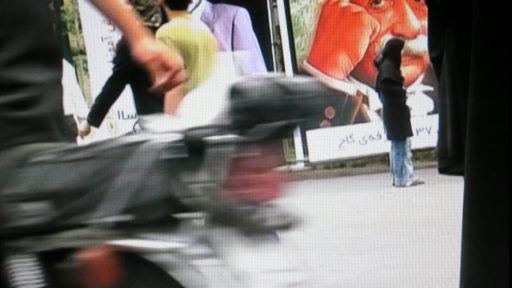
By the end of the twentieth century, Tehran had crept up the list of top ten biggest cities in the world. During the last century, its population mushroomed disproportionately fifty times, while the population of the country grew fivefold. Now the largest city in Western Asia, it is polluted, jammed with cars, its skyline pierced with skyscrapers, its desert horizon and epic mountain views obscured by poisonous vapours. It stands today an unwieldy metropolis with all the tensions and divides but also brimming with political frustrations and pent up energies of thwarted individual and collective dreams of several generations. From underneath, it is pregnant with testosterone-infused adolescent drives, which will not remain sublimated forever.
The films selected for Urban Observations, Tehran are subtle tales of the city, meditations on its transformations. These are ordinary tales, ordinary scenes. The films employ arbitrary individual reminiscences, first person narrations, still images, sounds of past lives, and fly on the wall gazes into quotidian life. These devices are employed to explore and arbitrate the human condition against the tides of a wounded modernising history. Memories of loss, ambivalent attitudes towards the present and defensive anxieties about the future are at the heart of these films. – Vali Mahlouji
Selected by Minou Norouzi and Vali Mahlouji. With thanks to Afshin Dehkordi and Hengameh Golestan. Vali Mahlouji is a London-based curator, art advisor, writer, and translator.
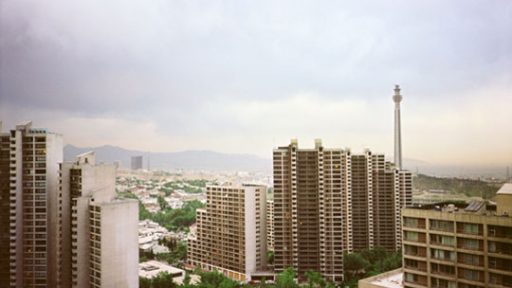
Persepolis | Solmaz Shahbazi | Iran 2005 | Video | 17 min
Solmaz Shahbazi’s trilogy explores the recent historical, social and urban trajectory of the Iranian capital, a city that has experienced several revolutions in the 20th century and counts over 12 million inhabitants today. Persepolis, the last video of the trilogy, is as much a tale about Tehran as it is about how individuals situate themselves in relation to the grander narratives of history. Set in a large scale, bourgeois housing complex in Tehran, the video explores a layered history through composed interior shots, played back against the voice of their owners, as they recount their lives in this neighbourhood and its place in the city’s recent evolution, often referring to “before” and “after” the Islamic Revolution of 1979.
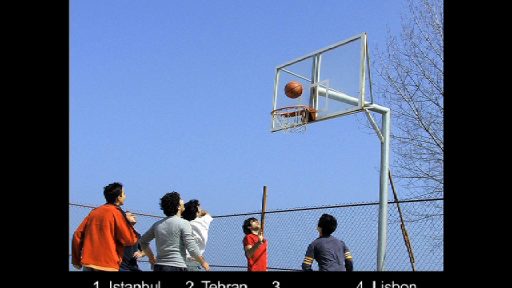
Geography Test for People in Pictures | Shirin Sabahi | Iran 2007 | Video | 3 min 17s
“When I was ten, our geography teacher tried to turn geography to an exciting game.
It turned to a nightmare instead…
She would show us pictures of different cities or its citizens and ask:
Where is this?
I don’t remember even one single time guessing the right name.
But I remember a question I asked myself a thousand times:
Do people in these cities recognize my city by looking at pictures of it?” – SS

Pardis Lost | Farhad Ahrarnia | Iran 2006 | Video | 31 min
‘Pardis Lost’ is a visual, fly on the wall, accumulation of recordings made at the time of 2006 edition of Tehran International Book Fair. The video is edited by London based film editor William Bone in accordance to the rhythm and structure of a non-linear analogue soundtrack composed by Sheffield based musician Brian Ellis. The hypnotic and over imposing soundtrack is extracted from Winston Churchill’s WWII propaganda speeches, mixed in with the voice of Iranian pop diva Mahasti forming an expressionistic dialogue across the boundaries of time, geographies, and abstract, contradictory histories. Resembling an animated tableau by Lowry, men and women exit and enter the frame, caught in a loop of scarcely articulated anticipations, whilst withholding their endless anxious dreams. Courtesy of Rose Issa Project
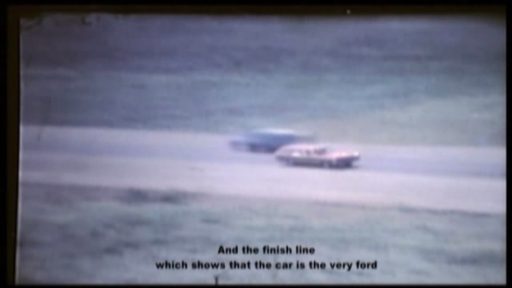
US Prime | Hadi Fallahpisheh | Iran 2012 | 8mm to video | 2 min 28s
A home movie of a family from years ago, when the import of American cars was still legal. The family is returning to Tehran from a trip with their Ford car. The father of the family has placed his 8mm camera on top of a hill and assigned his son to record the route their Ford is taking. The driver’s descriptions and explanations are not clear in the film and the picture of their Ford looks distant and eliminated like other cars on the road, but it’s a special car for them. An American Ford holds their over-populated family, including all children, and has taken them on a pilgrimage to Mashhad – a Ford which is as notable as a family member to be captured by the father’s camera.
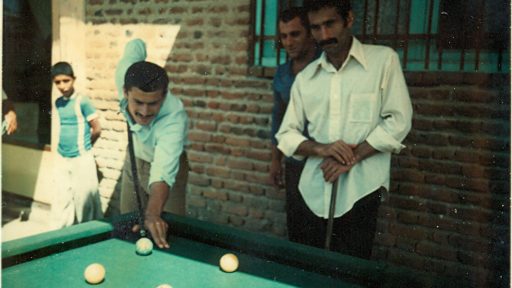
Revolutionary Memories of Bahman who Loved Leila | Farahnaz Sharifi | Iran 2012 | Video | 15 min
Bahman’s father warns him about Leila: she will bring the family nothing but misfortune. Bahman is 20 and tries to listen to his dad, but the year is 1979, and he ends up getting involved with both Leila and the Islamic Revolution. In his father’s mind, the revolution is trouble as well – it’s not up to normal Iranians to decide who should be in power. With the help of photos and in voice-over, Bahman tells of his desire for life, love and protest. In the black-and-white pictures, Bahman is invariably colored red: at a wedding, during a weekend trip to the Caspian Sea, playing soccer. Only when the protests get out of hand and the Shah’s soldiers begin shooting into the crowd does Bahman learn that his longing will bring death and destruction. And he remembers what his father always told him: “I see the bottom of the creek and you the surface.”